#millet flour cookies millet food
Explore tagged Tumblr posts
Text



Gluten Free Cookie Dough Brioche Rolls (via The Loopy Whisk)
#gluten free#gf food#gluten free foods#flour mix#sorghum flour#millet flour#tapioca starch#psyllium husk#breads#dessert#cookie dough#theloopywhisk
19 notes
·
View notes
Text
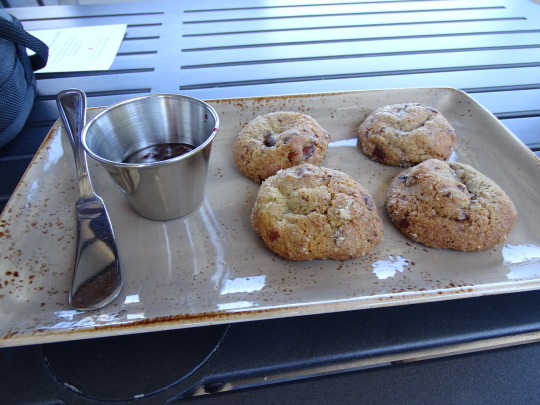

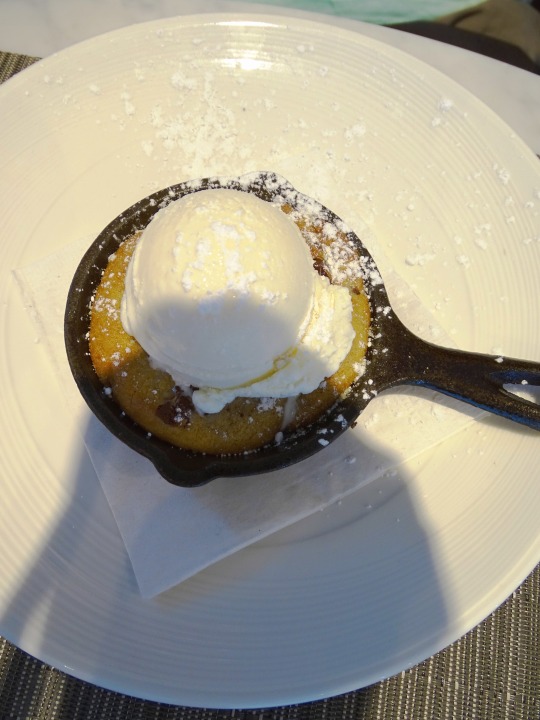


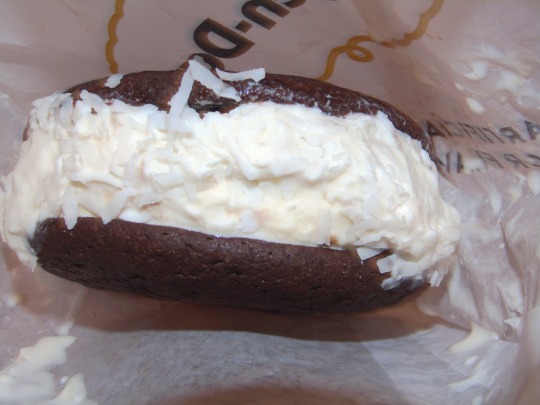
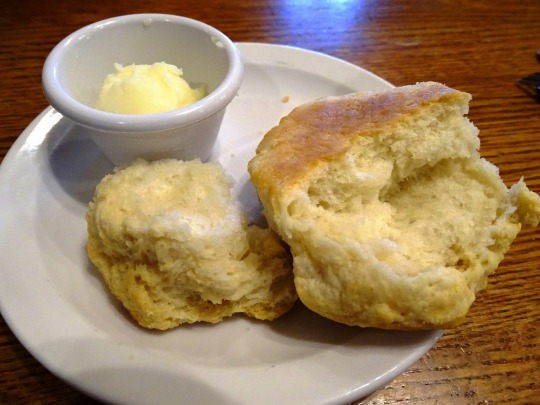


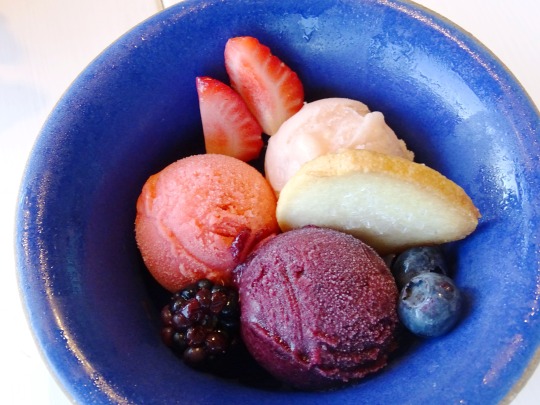
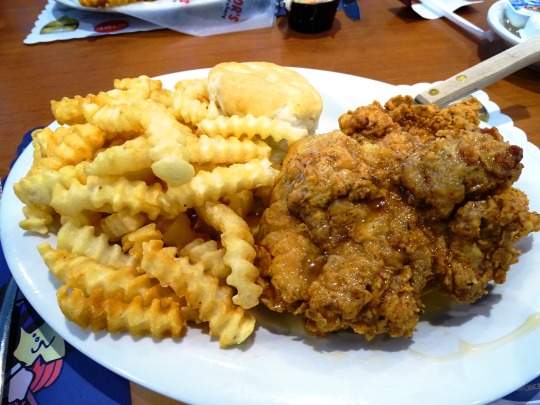

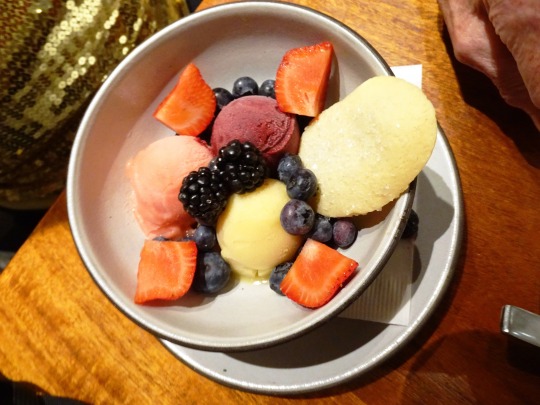
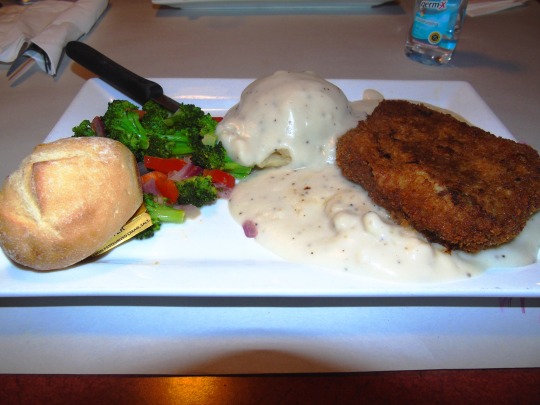

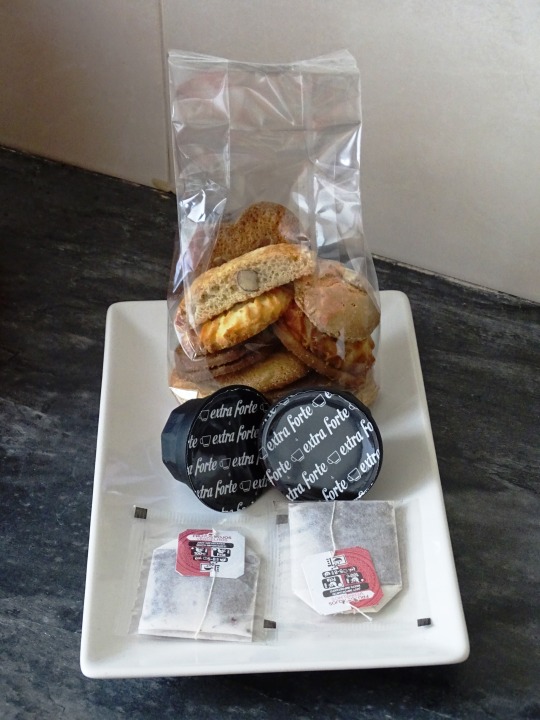
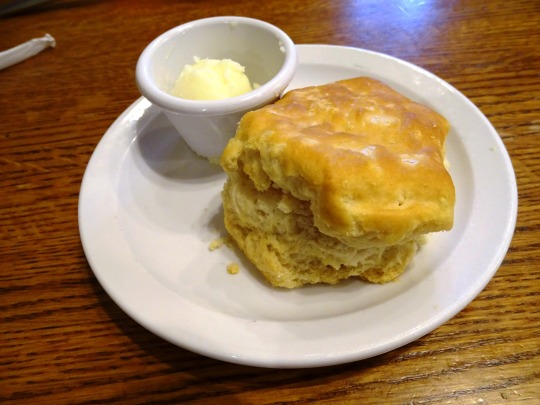

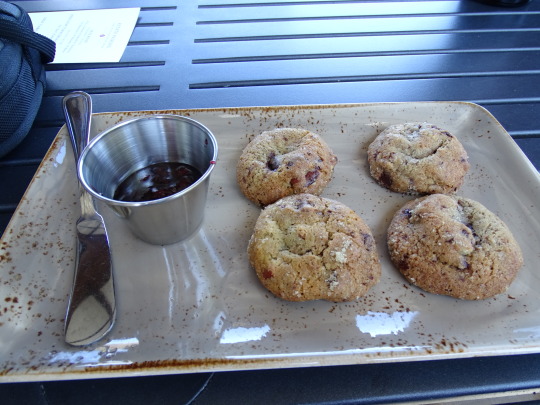
National Biscuit Day
In the US, they’re flaky bread rolls. In the UK, they’re sweet, crispy treats known as cookies in the US. Bake your own, and try different varieties and flavors.
Calling all smart cookies! National Biscuit Day offers the perfect chance to go crackers about one of the world’s most popular snacks. But did you realize just how many types of biscuits there are?
American biscuits are small crusty bread rolls, often served at breakfast or as a side dish. However, in the UK, the word “biscuit” is used for flat sweet treats, which are known as “cookies” in the US. One of the most unusual traditional British varieties is the Garibaldi. Also known as the “squashed fly biscuit,” it contains currants in between two layers of dough.
History Of National Biscuit Day
Many of you will be surprised to find out that biscuits aren’t a modern invention. Instead, they were born of necessity in the ancient world. Merchants and military personnel in the Roman, Greek, and Egyptian empires would often spend many weeks at sea, ferrying cargo and making their way to foreign shores. Hence, they needed a snack that would provide them with a source of calories for the entirety of the journey. Fresh food was out of the question. It just wouldn’t keep. So captains turned to stocking their larders with dried foods that wouldn’t go off.
Preservation techniques were already fairly advanced in ancient times. People knew that if you dried something out, it would last longer and wouldn’t go off. Millers, therefore, began grinding up flours and then baking cooked bread on a low heat for an extended period. This technique helps to retain the nutrition, but removes the water content, preventing any microbes from thriving.
From that point, dried biscuit-like breads became a staple at sea. The ancient Egyptians, for instance, cooked up flat brittle loaves made of an old grain called millet. Later, the Romans created the first example of what we would recognizably call a biscuit. They spread wheat flour paste over a plate and then left it to dry and harden.
Biscuits also played a prominent role in the early history of medicine. Many physicians believed that problems with the body emerged in the bowel. An “imbalance” in the gut led to patients developing all sorts of nasty symptoms, including many health problems we would recognize today. Doctors, however, saw biscuits as a health aid – very different from the view of medics today – and prescribed them daily for people with digestive issues.
Interestingly, this approach probably would have worked. Cooks made ancient biscuits of whole grains and without sugar. They were a plain, high-fiber food, ideal for settling stomachs.
Eating biscuits at sea remained popular in the middle ages. In the sixteenth century, the Royal Navy provided its sailors with a daily allowance of a pound of cookies and a gallon of beer (yes, you did read that right!) to help them fight off the Spanish armada.
The modern conception (or should we say “confection”) of biscuits as sweet treats didn’t begin until the seventh century. The ancients saw them strictly as a travel food – something you’d take with you for long journeys that wouldn’t spoil. But the Persians began to experiment. Instead of just making the flour into a paste with water, they began incorporating other ingredients like eggs, butter, and cream to improve the texture. They noticed that when you added these items to the mix, you wind up with fluffier, more luxurious delicacies. After a while, they introduced sweet things, like fruit and honey, creating the first cookies in history.
Biscuits arrived in Europe around the end of the tenth century. Legend has it that an Armenian monk traveled from central Asia to France and passed on a recipe he had learned in the Caucuses. The main flavor at the time was ginger.
Even so, these biscuits were still not the modern confections that we enjoy today. They were fluffy and tastier than their ancient forebears, but the mass production of sugar was still absent. For most of the middle ages, biscuits were a side-show – and exotic delicacy that people in some parts of the world enjoyed on occasion as part of their traditional cuisine.
Once sugar production ratcheted up in the eighteenth century, however, the game changed. Suddenly, flour-millers and bread makers could add sweetness to their mixes and create entirely new classes of products, all at a low cost.
By the 19th century, per capita sugar consumption rocketed, and biscuit firms like McVitie’s, Crawfords, and Carr’s all set up factories to mass-produce confections.
The history of biscuits, however, bifurcated between the new and Old World. In the New World, the term came to mean a soft, leavened quickbread. In the Old World, it referred to an unleavened, hard, and flat, flour-based product.
National Biscuit Day is a celebration of biscuits of all forms – not just cookies, but also oatcakes, crackers, water biscuits, and crispbreads. While most biscuits for sale are sweet, savory varieties still make up a considerable chunk of overall sales.
How to celebrate National Biscuit Day
As you might imagine, celebrating National Biscuit Day is a lot of fun. It is your yearly excuse to eat as many biscuits as you like – and to do a spot of baking.
Baking an ancient Roman biscuit called a buccellum is perhaps the most exciting way to experience the day. While the final product won’t be as delectable as manufactured biscuits, it will give you an insight into the sort of cuisine that people enjoyed in the past while sailing.
Failing that, nothing is stopping you from baking cookies or traditional biscuit bread. What’s more, you could trial unique, healthy versions using authentic ingredients. There are plenty of recipes that still use wholemeal flours and sugar alternatives on the internet.
Biscuits are an experience that you’ll want to share. Many people, therefore, invite family and friends over for an afternoon of cookies and tea enjoyed in the traditional style. You just take your favorite type of tea (Assam, Darjeeling, and so on), add a spot of milk, some sugar, and then pair with your favorite biscuits – sweet or savory! Many people like to dunk their biscuits in their tea.
Traditionally biscuits came in particular sizes and shapes. Still, there’s no need to stick with the official format if you don’t want to. Cookies don’t have to be round. If you’ve got some shape cutters at home, put them to good use. You can make cookies in the shape of donkeys, cars, stars, hearts, triangles – whatever you have to hand. And for extra fun, you can cover them in icing sugar.
There are few crumbs of information about just how National Biscuit Day started, but that’s no reason to miss out on the celebrations. So bake up a treat for friends and family, or settle down with a cup of tea or coffee and enjoy one of your favorite varieties. Don’t forget to share your creations with your friends on social media. You never know what other biscuit fanatics are lurking out there.
Source
#S'More Ice Cream Sandwich#Toasted Marshmallow S'mores Galore#OREO Dream Extreme Cheesecake#Oreo Explosion#travel#original photography#vacation#tourist attraction#food#dessert#restaurant#Canada#cookie skillet#Trio of Sorbet#St. Francis Winery & Vineyards#fried chicken#Maple Glazed Fried Chicken#National Biscuit Day#29 May#NationalBiscuitDay#USA#summer vacation#shortbread#Chicken Fried#Häagen-Dazs Coconut Ice Cream Sandwich
2 notes
·
View notes
Photo

RECIPE: Mochi Doughnuts (From Win Son Presents A Taiwanese American Cookbook by Josh Ku, Trigg Brown, and Cathy Erway)
Taiwan is famous for Q or QQ textures, which may be best translated as “Bouncy” or “Springy.” Think boba, gummy bears, and mochi, a sticky rice treat popular throughout East Asia. These doughnuts are made with sticky rice flour for a chewy bite that stretches in a very Q way. Mochi doughnuts are definitely a thing in Taiwan, and Danielle really gravitated to the ones she sampled throughout Taiwan, having made many fried doughnuts fresh to order in her time at Craft, working under doughnut and overall pastry legend Karen DeMasco.
In Tainan, we also sampled mochi doughnuts made with millet flour in addition to sticky rice flour, and Danielle was eager to start recipe-testing as soon as she returned. She landed on this formula that’s satisfyingly QQ, delicious, and also completely gluten-free. Once they’re out of the fryer, they can be coated with sugar and your choice of additional seasonings—at Win Son Bakery, we love a classic sugar and cinnamon topping, but you can add to yours some toasted and ground black sesame seeds, ground black cardamom, ground ginger, and any other spices you love. Or just toss them with sugar—sometimes that’s all you need.
Makes about 12
INGREDIENTS
FOR THE BATTER:
5 cups (800 g) glutinous rice flour
1½ cups (165 g) millet flour
12⁄3 cups (335 g) sugar
1⁄3 cup (65 g) baking powder
3 tablespoons salt
3 cups (720 ml) whole milk
1 cup (225 g) unsalted butter, melted and cooled
6 eggs
FOR SHAPING AND FRYING:
2 quarts (2 L) neutral oil for frying, such as soybean
1/4 cup (40 g) glutinous rice flour, plus more for cutting out the donuts
TO FINISH:
1 cup (200 g) sugar
2 tablespoons ground cinnamon (optional)
MAKE THE BATTER: In the bowl of a stand mixer, combine all of the ingredients for the batter and mix with the paddle attachment until a smooth dough forms. Wrap the dough in plastic wrap and refrigerate for 3 hours or overnight.
SHAPE AND FRY THE DOUGH: In a fryer or Dutch oven, preheat the oil to 325°F (165°C), when measured with a candy thermometer.
Sprinkle 1/4 cup (40 g) rice flour on a flat surface and on top of the dough and roll it out until it’s about ½ inch (12 mm) thick. Cut doughnuts about 3 inches (7.5 cm) in diameter using a doughnut cutter, concentric cookie cutters, or a drinking glass and a shot glass, flouring the cutters to avoid sticking. Combine the leftover pieces and roll out the dough again into a ½-inch-thick (12 mm) layer as many times as possible, to create as many doughnuts as you can.
Work in batches so as not to overcrowd the fryer. Once the oil is up to temperature, gently place as many doughnuts as will comfortably fit into the oil and allow to fry for 3 minutes before carefully turning them over. Fry the other side for 3 minutes and drain on a cooling rack with something underneath to catch any excess oil.
To finish, on a plate, mix the sugar and cinnamon, if using. Toss the doughnuts with the mixture and serve immediately.
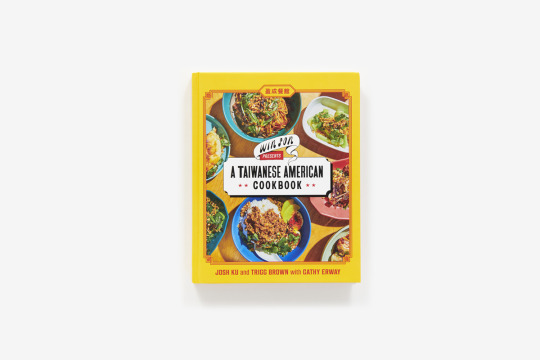
A modern, brashly flavorful guide to cooking Taiwanese-American food, from Brooklyn’s lauded Win Son, Win Son Bakery, and Cathy Erway, celebrated writer and expert on the cuisine.
Josh Ku, born in Queens to parents from southern Taiwan, and Trigg Brown, a native Virginian whose mentor was a Taiwanese-American chef, forged a friendship over food—specifically, excellent tsang ying tou, or "flies’ head," a dish of chopped budding chives kissed with pork fat. Their obsession with Taiwanese food and culture propelled them to open Win Son together in 2016. The East Williamsburg restaurant quickly established itself as a destination and often incurs long waits for their vibrant and flavorful Taiwanese-American cuisine.
Ku and Brown have teamed up with Cathy Erway, Taiwanese food expert and celebrated writer, to create this book which explores and celebrates the cuisine of Taiwan and its ever-simmering pot of creative influences. Told through the eyes, taste buds, travels, and busy lives of Ku, Brown, and Erway, this book brings the cuisine of this misunderstood island nation into the spotlight. With 100 creative, yet accessible recipes, this book will unravel the history of this diaspora cuisine. While featuring classic dishes and well-known favorites, this cookbook also stretches this cuisine's definition, introducing new dishes with brazen twists that are fun, flavorful, and decidedly American-born in style.
For more information, click here.
#abramsbooks#abrams books#win son#win son presents a taiwanese american cookbook#taiwanese american#taiwanese#taiwanese food#taiwanese recipe#win son bakery#josh ku#trigg brown#cathy erway#recipe#free recipe#doughnut recipe#donut recipe
14 notes
·
View notes
Text
Price: [price_with_discount] (as of [price_update_date] - Details) [ad_1] From the brand Healthy Mathri Exotic Nuts Healthy Combo Packs Makhana Healthy Chips Healthy Millet Cookies Healthy Energy Bars NUTRIENT-RICH SNACK Packed with Rich in Protein, Rich in Vitamins, and Powerful Antioxidants to boost energy. Enjoy our Baked Mathri for guilt-free snacking! CRUNCHY AND HEALTHY Choose a healthier option with our Baked Mathri. This Low GI Food offers the perfect balance of flavor and nutrition for your daily cravings. TRADITIONAL TASTE, MODERN TWIST Relish the authentic flavors of Makai Masala Mathri, a classic favorite turned into a healthier, baked delight. Perfect for all occasions! HEALTHY NAMKEEN SNACKS Perfect for tea-time, travel, or a quick bite. Our Mathri Snacks deliver crunch and flavor without the guilt, ideal for health-conscious snackers. LONG-LASTING FRESHNESS Packed for extended freshness, these Mathri Snacks are a light and crunchy alternative to fried snacks. Order now and experience the joy of healthy munching! BAKED TO PERFECTION Unlike fried alternatives, our Healthy Namkeen Snacks and Baked Mathri retain all the flavor with none of the guilt. A treat your taste buds will thank you for! Relieves postmenopausal symptoms Ingredient: Corn flour whole wheat flour Salt Till Jeera Jeera powder Chili powder Amchur Chaat masala Turmeric powder 2% Oil used for baking purposes only [ad_2]
0 notes
Text
Ragi Chocolate Bar Recipe with Cocoa Powder
Ragi, also known as finger millet, is a superfood packed with nutrients like calcium, fiber, and iron. To learn ragi chocolate bar recipe with step by step instruction, you should watch and subscribe to the YouTube channel of Ajanta Food Products. When combined with the rich flavor of cocoa powder and the aromatic touch of vanilla essence, it transforms into a delicious and healthy chocolate bar that's perfect for snacking. Here's a simple ragi chocolate cake recipe.

Ingredients:
1 cup ragi flour
2 tablespoons cocoa powder from Ajanta Food Products, which can be purchased online from Amazon at https://www.amazon.in/AJANTA-Baking-Powder-Custard-Vanilla/dp/B09GM21N1R
1/4 cup jaggery powder (or sugar)
2 tablespoons butter or ghee
1/4 cup milk (adjust as needed)
Few drops of vanilla essence from Ajanta Food Products, which can be purchased online from Amazon at https://www.amazon.in/Vanilla-Essence-Flavour-Cookies-Flavours/dp/B0B71YRCSW
A pinch of salt
Optional: chopped nuts, dried fruits, or seeds
Instructions:
In a non-stick pan, dry roast the ragi flour on low heat until it releases a nutty aroma.
This usually takes about 5-7 minutes.
Set aside to cool.
In the same pan, melt butter or ghee.
Add jaggery powder and stir until it dissolves.
Add cocoa powder, few drops of vanilla essence, and a pinch of salt.
Mix well to form a smooth paste.
Slowly add the roasted ragi flour to the chocolate mixture, stirring continuously to avoid lumps.
Add milk gradually to bring the mixture together into a thick, dough-like consistency.
Transfer the mixture to a greased tray or mold.
Spread evenly and press firmly.
Garnish with nuts or seeds, if desired.
Allow the mixture to cool completely.
Refrigerate for 1-2 hours until firm.
Cut into bars and serve.
The Bottom Line
These ragi chocolate bars are not just tasty but also a nutritious treat for all ages. Store them in an airtight container for up to a week.
0 notes
Text
Why Organic Flour is the Healthier and Sustainable Choice for Your Kitchen
Organic flour is quickly gaining popularity among health-conscious individuals and families due to its many health benefits and sustainable production methods. Unlike conventional flour, which is often processed with synthetic chemicals, pesticides, and artificial fertilizers, organic flour is made from grains that are grown without these harmful substances. This natural approach to farming not only preserves the environment but also ensures that the flour you consume is free from harmful additives, making it a healthier choice for both your body and the planet.
One of the most significant advantages of organic flour is the absence of synthetic chemicals. Conventional farming methods often rely on pesticides and herbicides to control pests and weeds, which can leave residue on crops that eventually end up in the food we consume. Organic farming, on the other hand, avoids these chemicals, instead focusing on natural alternatives such as crop rotation, composting, and biological pest control. As a result, organic flour is free from harmful chemicals, which makes it a safer option for individuals concerned about the potential long-term health risks of consuming pesticide residues.
Organic flour is also known for its superior nutritional content. Because organic grains are grown in healthier soil that is not depleted by synthetic fertilizers, they often contain higher levels of important vitamins and minerals compared to their conventionally grown counterparts. Organic flour is typically richer in antioxidants, which help protect the body from oxidative stress and inflammation. These antioxidants, combined with the high fiber content of organic flour, contribute to better digestion and can reduce the risk of chronic diseases such as heart disease and diabetes.
The fiber found in organic flour is especially beneficial for digestive health. Fiber is essential for promoting regular bowel movements, preventing constipation, and supporting the overall function of the digestive system. In addition to aiding digestion, fiber helps to regulate blood sugar levels, prevent spikes in blood glucose, and maintain steady energy levels throughout the day. Consuming organic flour as part of a balanced diet can help improve overall gut health, which is a key factor in maintaining good health and preventing various digestive disorders.
Another notable benefit of organic flour is that it is typically made from non-GMO (genetically modified organisms) grains. Many conventional grains are genetically modified to resist pests or tolerate herbicides, but these modifications can have unknown long-term effects on human health and the environment. Organic grains, however, are grown without genetic modification, ensuring that you are consuming a natural and pure product. This is especially important for individuals who wish to avoid genetically modified foods and support sustainable farming practices.
Organic flour is also often fresher and more flavorful than conventional flour. Because organic grains are processed with minimal interference and often in smaller batches, they retain more of their natural flavor and nutrients. Organic flour has a distinctive, rich taste that adds depth to baked goods, giving bread, cakes, and cookies a more complex and satisfying flavor. The superior taste and texture of organic flour can make a noticeable difference in the quality of your baked goods, making it a worthwhile investment for anyone who values flavor and nutrition.
For those with dietary restrictions, organic flour can be a great choice. It is available in a wide variety of types, including gluten-free options such as rice flour, millet flour, and sorghum flour. These gluten-free organic flours provide individuals with celiac disease or gluten sensitivity a safe and nutritious alternative to traditional wheat flour. Organic flour also comes in different varieties, such as whole wheat, oat, and spelt flour, allowing individuals to choose the type of flour that best suits their health needs and personal preferences.
In addition to its health benefits, organic flour is a more sustainable choice for the environment. Organic farming practices are designed to maintain soil health and minimize the use of chemical fertilizers and pesticides. This results in less pollution and a reduced environmental footprint compared to conventional farming methods. By choosing organic flour, you are supporting farmers who prioritize sustainability and the health of the land, ensuring that future generations can continue to enjoy healthy, chemical-free food.
For those looking to incorporate organic flour into their cooking and baking, Oman Flours provides an excellent selection of high-quality organic flour options. Their organic flour is sourced from trusted farmers who follow strict organic farming practices, ensuring that the flour is not only nutritious and chemical-free but also sustainably produced. Whether you're baking bread, making pancakes, or using it in a variety of recipes, Oman Flours' organic flour offers a wholesome and delicious alternative to conventional flour. By choosing Oman Flours, you can be confident that you're supporting a brand that values both your health and the health of the planet
0 notes
Text
Meal Ideas for a Gluten-Free Diet: Delightful Millet Cookies and More
Maintaining a gluten-free diet doesn't have to feel like a restriction; instead, it can be an opportunity to explore exciting and nutritious meal options. Whether you have celiac disease, gluten sensitivity, or simply choose to avoid gluten for health reasons, there are countless delicious and healthy meals to enjoy. One versatile ingredient that can serve as the foundation for many gluten-free recipes is millet. Here, we’ll explore meal ideas centered around millet cookies and other gluten free meal, ensuring you never feel deprived while following a gluten-free meal plan.
Understanding a Gluten-Free Diet
A gluten-free diet eliminates foods containing gluten, a protein found in wheat, barley, and rye. Common gluten-containing products include bread, pasta, cereals, and many processed foods. Choosing gluten-free meals means focusing on whole foods like fruits, vegetables, lean proteins, and gluten-free grains.
The Benefits of a Gluten-Free Diet
Improved Digestive Health: Many people experience better digestion and reduced bloating when cutting out gluten.
Increased Energy: A gluten-free diet can eliminate fatigue associated with gluten intolerance.
Nutrient-Rich Foods: Focusing on whole foods encourages the intake of nutrient-dense ingredients, promoting overall health.
Variety: A gluten-free lifestyle opens the door to a large variety of foods, including grains like millet, quinoa, and brown rice.
The Star Ingredient: Millet
Millet is a whole grain that’s not only gluten-free but also packed with essential nutrients. It's rich in fiber, protein, and various vitamins and minerals, making it an ideal food for anyone looking to maintain a healthy diet. Here are some key reasons to incorporate millet into your gluten-free meal choices:
Nutritional Benefits: Millet contains magnesium, phosphorus, and B vitamins, which are vital for energy production and overall well-being.
Great for Baking: Millet flour can be used to create delicious baked goods, including our featured millet cookies.
Versatile: Millet can be used in a variety of recipes ranging from savory to sweet, including salads, soups, and of course, cookies.
Meal Ideas Featuring Millet Cookies
Now that we understand the benefits of millet and the structure of a gluten-free diet, let’s dive into some meal ideas that showcase millet cookies as a delightful treat, along with other wholesome gluten-free options.
1. Breakfast Ideas
Starting your day off right is essential, and gluten-free meals can help you do just that.
a. Millet Cookie Breakfast Parfait
Layer crushed millet cookies with Greek yogurt (or a dairy-free yogurt alternative) and seasonal fruits like berries or sliced bananas. This parfait is not only a treat but also packs protein, healthy fats, and vitamins.
Ingredients:
2 millet cookies, crumbled
1 cup Greek yogurt
½ cup mixed berries
Honey or maple syrup (optional)
Instructions:
In a glass, layer half of the yogurt, followed by half of the crumbled cookies and half of the berries.
Repeat the layers and drizzle with honey or syrup if desired.
b. Millet Porridge with Cookie Crumble
Start your day with a warm bowl of millet porridge made from cooked millet. Top it with crumbled millet cookies, chopped nuts, and a drizzle of maple syrup for a satisfying breakfast.
Ingredients:
1 cup cooked millet
1-2 millet cookies, crumbled
¼ cup chopped nuts (almonds, walnuts, etc.)
Maple syrup or honey
Instructions:
Prepare the millet according to package instructions.
Stir in the cookie crumbles, nuts, and drizzle with syrup before serving.
2. Lunch Ideas
Lunchtime provides a perfect opportunity to combine flavors and nutrients in your meals.
a. Quinoa and Millet Salad with Cookie Crumble
Create a refreshing salad using quinoa and cooked millet, tossing in your favorite vegetables like bell peppers, cucumbers, and cherry tomatoes. Finish with crumbled millet cookies to add an unexpected sweetness.
Ingredients:
1 cup cooked quinoa
1 cup cooked millet
1 cup diced vegetables (bell peppers, cucumbers, tomatoes)
Olive oil, lemon juice, salt, and pepper for dressing
1-2 millet cookies, crumbled
Instructions:
In a mixing bowl, combine quinoa, millet, and vegetables.
Drizzle with olive oil and lemon juice, seasoning with salt and pepper.
Top with crumbled millet cookies just before serving.
b. Hummus and Veggie Wrap
Use gluten-free wraps made from rice or corn, spread a layer of hummus, and fill with fresh vegetables like spinach, carrot, and cucumber. Enjoy your wafer thin wrap with a serving of millet cookies for a delightful crunch.
Ingredients:
Gluten-free wraps
¼ cup hummus
Fresh vegetables (spinach, shredded carrot, cucumber)
1-2 millet cookies
Instructions:
Spread hummus on the wrap.
Layer with vegetables, roll it up, and slice in half.
Serve with millet cookies on the side.
3. Snack Ideas
Snack time is the perfect opportunity to enjoy millet cookies while keeping your energy levels up.
a. Trail Mix with Millet Cookie Chunks
Create a homemade trail mix by combining your favorite nuts, seeds, dried fruits, and chunks of broken millet cookies for a balanced snack that offers protein, healthy fats, and carbohydrates.
Ingredients:
½ cup mixed nuts
½ cup seeds (pumpkin, sunflower)
½ cup dried fruits (raisins, cranberries)
1-2 millet cookies, broken into pieces
Instructions:
In a bowl, mix all ingredients together.
Store in an airtight container for an on-the-go snack.
b. Millet Cookie and Nut Butter Sandwich
Spread your favorite nut butter, such as almond or sunflower seed butter, between two millet cookies for a delicious and filling snack that provides healthy fats and protein.
Ingredients:
2 millet cookies
2 tablespoons nut butter
Instructions:
Spread nut butter on one cookie and top with the other to create a sandwich.
4. Dinner Ideas
Dinner doesn’t have to be complicated, and gluten-free meals can be both simple and satisfying.
a. Stuffed Bell Peppers with Millet and Vegetables
Prepare gluten-free stuffed bell peppers using a mixture of cooked millet, vegetables, and spices. Serve with a side of crumbled millet cookies for a sweet finish.
Ingredients:
4 bell peppers, halved and seeded
1 cup cooked millet
1 cup diced vegetables (zucchini, onion, tomatoes)
Olive oil, salt, and pepper
Instructions:
Preheat the oven to 375°F (190°C).
Mix cooked millet with vegetables and season with oil, salt, and pepper.
Stuff the mixture into halved bell peppers and bake for 30 minutes.
Serve with crumbled millet cookies for dessert.
b. Zucchini Noodles with Pesto and Grilled Chicken
Prepare a plate of spiralized zucchini noodles dressed in homemade pesto and topped with grilled chicken. Enjoy your meal alongside a couple of millet cookies for a satisfying finish.
Ingredients:
2 medium zucchinis, spiralized
1 cup cooked chicken, shredded
½ cup pesto
1-2 millet cookies
Instructions:
Toss zucchini noodles with pesto until well coated.
Serve topped with shredded chicken and millet cookies on the side.
Conclusion
Living gluten-free doesn’t mean giving up delicious meals or snacks. Millet cookies are not just a tasty treat; they can enhance a variety of gluten-free meal ideas—from breakfast parfaits to dinner entrees. With creativity and wholesome ingredients, your gluten-free meals can be both nutritious and enjoyable.
Don’t hesitate to explore the multitude of flavors and nutrients that millet and other gluten-free ingredients can provide. Incorporate these meal ideas into your daily routine and discover the wide-ranging benefits of a gluten-free diet—one delightful millet cookie at a time!
0 notes
Text
Nutritional powerhouses: Browntop Millet a hidden gem.
Traditional diets have included the less-known but quite nutritious grain known as brown top millet for millennia. Rising as a superfood with its rich nutritional profile and environmental sustainability is among the unpolished millet family, and browntop millet keeps its outer bran layer full of minerals, vitamins, and fibre. A flexible and nutritious choice, browntop millet stands out as customers move towards better and more sustainable food choices.
Nutritional Highlights of Browntop Millet
Celebrated for its rich nutritious value is brown top millet. Rich in dietary fibre, it supports digestive health and helps control blood sugar levels, which qualifies it for those trying to reduce weight or control diabetes. Stronger bones and improved cardiovascular health depend on the vital minerals magnesium, calcium, and phosphorous in abundance here. Because of its unpolished character, browntop millet keeps all its natural goodness, unlike polished grains undergoing nutrient-stripping procedures. This makes it an excellent substitute for refined grains in daily cuisine. These millet are highly packed with proteins and fibres, which are therefore suitable for kids.
Comparing Browntop Millet with Other Millets
While other nutrient-dense grains like barnyard millet and foxtail millet have unique advantages, Browntop millet takes the front stage. Barnyard millet is a low glycaemic index grain high in fibres and perfect for regulating blood sugar. Additionally, a great source of Iron, it helps avoid anaemia. On the other hand, since foxtail millet is high in protein, vegetarians and others trying to increase muscular health turn to the first grain. Furthermore, heavy in antioxidants, foxtail millet helps fight free radicals and lower the risk of chronic diseases.
Health Benefits of Unpolished Millets
Browntop millet's classification as unpolished millet is one of the main reasons for its increasing appeal. Unpolished millets keep their outer layer, which is high in dietary fibre and important micronutrients, unlike polished grains. This makes them very helpful for preserving a good weight, enhancing digestion, and reducing cholesterol.
Culinary Applications of Browntop Millet
The mild, nutty taste and adaptability of brown top millet make it a great addition to many recipes. Recipes include pilafs, salads, and stir-fries, which call for rice or quinoa, which can be substituted. It is also an excellent choice for classic cuisine, such as oatmeal, khichdi, and dosa. Using browntop millet flour in breads, cookies, and muffins, baking aficionados will have nutrient-dense substitutes for traditional baked products. In mixed-grain meals, pairing browntop millet with other unpolished millets, such as barnyard or foxtail, improves taste and nutritional value.
Environmental Impact and Sustainability
Along with being a nutritional powerhouse, brown top millet is a sustainable crop. It requires little water and fertilisers and thrives in desert and semi-arid areas. Its short growth cycle and resistance to poor soil conditions make it perfect for sustainable farming methods. Moreover, growing browntop millet supports biodiversity and lowers the environmental impact of agriculture, therefore complementing worldwide initiatives to address climate change. They are perfect choice for healthy Choice for Modern Lifestyle. As knowledge of unpolished millets spreads, browntop millet will become a mainstay in kitchens.
0 notes
Text
Unlock the Benefits of Organic Multigrain Flour for a Healthier Lifestyle

In today’s health-conscious world, people are constantly searching for natural and nutritious alternatives to improve their diet. Among the rising stars in the organic food industry is organic multigrain flour. This versatile flour is not only a boon for health enthusiasts but also a game-changer for home bakers and culinary artists alike. Whether you’re a fitness enthusiast, a parent aiming to provide wholesome meals for your family, or a foodie exploring diverse flavors, organic multigrain flour is the perfect addition to your pantry.
What is Organic Multigrain Flour?
Organic multigrain flour is a blend of flours made from different grains such as wheat, barley, millet, oats, and maize. Unlike traditional single-grain flours, this combination provides a rich nutritional profile and an earthy flavor. The "organic" label ensures that the grains are grown without synthetic fertilizers, pesticides, or genetically modified organisms (GMOs), making it a safer and healthier choice for your meals.
Nutritional Powerhouse in Every Scoop
Organic multigrain flour stands out due to its exceptional nutritional benefits. Here’s what makes it a superfood:
Rich in Fiber: The combination of multiple grains offers a significant amount of dietary fiber, promoting better digestion and reducing the risk of constipation.
Packed with Protein: A perfect choice for vegetarians and fitness enthusiasts, multigrain flour provides a plant-based protein boost for muscle repair and growth.
Loaded with Vitamins and Minerals: It contains essential nutrients like iron, magnesium, zinc, and B vitamins, which support overall health.
Low Glycemic Index: The blend of grains helps maintain steady blood sugar levels, making it suitable for diabetics.
Why Go Organic?
Choosing organic multigrain flour over conventional options comes with numerous benefits:
Chemical-Free Goodness: Organic farming practices ensure that the grains are free from harmful chemicals and pesticides.
Better Taste and Texture: Organic grains retain their natural flavor, adding a wholesome taste to your recipes.
Environmental Sustainability: Organic farming is eco-friendly and supports biodiversity, ensuring sustainable agricultural practices.
Versatile Culinary Applications
Organic multigrain flour isn’t just healthy; it’s incredibly versatile. From traditional Indian flatbreads to modern baked goods, its applications are endless. Here are some popular recipes you can try:
Multigrain Roti or Paratha: A healthier twist on traditional Indian bread, perfect with curries and vegetables.
Multigrain Pancakes: Start your day with a nutritious breakfast packed with the goodness of multiple grains.
Cookies and Muffins: Substitute regular flour with organic multigrain flour for guilt-free treats.
Pizza Base: Give your pizza a healthy makeover by making the base with organic multigrain flour.
How to Choose the Best Organic Multigrain Flour
When shopping for organic multigrain flour, look for the following:
Certified Organic Label: Ensure the product has a legitimate certification from recognized organic farming organizations.
Freshness: Check the packaging date to ensure freshness and better taste.
Transparency: Opt for brands that clearly list the grains included in the flour blend.
Storing Organic Multigrain Flour
To maintain the freshness and nutritional quality of your organic multigrain flour, store it in an airtight container in a cool, dry place. Refrigeration is recommended if you live in a humid climate, as it prevents the growth of insects or mold.
Where to Buy Organic Multigrain Flour?
With the growing demand for healthy food options, organic multigrain flour is now available both online and in local health food stores. KP e-Mart, for instance, offers premium-quality organic multigrain flour made from carefully selected grains. Their commitment to providing chemical-free, natural products makes them a trusted choice for health-conscious consumers.
The Sustainable Choice for the Future
Incorporating organic multigrain flour into your diet isn’t just a step towards better health—it’s a step towards a healthier planet. Organic farming methods reduce environmental pollution and conserve water and soil health. By choosing organic products, you support sustainable practices that benefit everyone.
Conclusion
Organic multigrain flour is more than just a kitchen staple; it’s a pathway to a healthier lifestyle. With its superior nutritional profile, chemical-free assurance, and versatility in cooking, it’s no wonder that this flour is gaining popularity among health enthusiasts. Whether you’re making a hearty breakfast, a delicious dessert, or an evening snack, organic multigrain flour is your ally in crafting wholesome meals.
Ready to make the switch? Embrace the goodness of organic multigrain flour from KP E-MART and let every bite reflect your commitment to health and sustainability.
#OrganicMultigrainFlour#HealthyEating#OrganicLiving#WholesomeNutrition#SustainableFood#CleanEating#HomeBaking
0 notes
Text
The Millet Diet: Can This Ancient Grain Help You Lose Weight?

In the quest for sustainable and effective weight loss solutions, millet—a humble ancient grain—is gaining traction as a nutritional powerhouse. Known for its rich nutrient profile and versatility, millet may be the answer to achieving weight loss without resorting to restrictive diets or extreme measures.
Let’s dive into how millet can support weight loss, why traditional diets often fail, and how you can incorporate this superfood into your daily meals.
The Millet Challenge: A 30-Day Experiment
What if you replaced some of your regular meals with millet-based dishes for a month? This experiment aims to test millet’s reputation as a weight-loss-friendly superfood.
Millet has been consumed for centuries in various cultures, but it’s recently gained popularity due to its health benefits. Unlike crash diets that focus on eliminating entire food groups, millet provides a balanced approach that nourishes the body while promoting weight loss.
Why Many Diets Fail
Weight loss is challenging for many reasons, but a key factor is sustainability. Traditional diets often fail because:
They are too restrictive, leading to boredom or cravings.
They lack essential nutrients, resulting in fatigue or nutrient deficiencies.
They focus solely on calorie cutting, slowing down the metabolism over time.
These pitfalls can lead to frustration and a lack of long-term success.
Millet as a Weight Loss Ally
So, how does millet address these challenges?
Millet is a nutrient-dense grain packed with:
Protein: Supports muscle repair and boosts satiety.
Fiber: Aids digestion, keeps you feeling full longer, and curbs cravings.
Complex Carbohydrates: Provides sustained energy without causing blood sugar spikes.
Resistant Starch: Improves insulin sensitivity, supports metabolism, and lowers cholesterol levels.
Additionally, millet is gluten-free, making it a safe option for individuals with gluten sensitivities.
The Versatility of Millet
One of millet’s biggest advantages is how easy it is to incorporate into your diet. Its mild, nutty flavor works well in both savory and sweet dishes. Here are some ideas:
Breakfast: Millet porridge topped with fruits and nuts.
Lunch/Dinner: Millet-based stir-fries, curries, or salads.
Snacks/Desserts: Millet flour can be used for baking muffins, pancakes, or cookies.
Recipe to Try: Millet and Vegetable Stir-Fry
Sauté onions, garlic, and mixed vegetables in olive oil.
Add cooked millet and lightly toast it.
Season with soy sauce or your favorite spices. Enjoy a nutritious, filling meal that’s perfect for weight loss!
Success Stories and Scientific Backing
The benefits of millet aren’t just anecdotal—they’re backed by science. Studies have shown that millet consumption can:
Support significant weight loss compared to other diets.
Reduce inflammation in the body.
Improve insulin sensitivity, which is critical for managing weight and metabolic health.
Take Sarah, for instance. After years of struggling with weight, she incorporated millet into her meals. Within weeks, she noticed fewer cravings, higher energy levels, and consistent weight loss—over 20 pounds in just a few months.
How to Get Started
If you’re ready to try millet, start by replacing one or two meals a week with millet-based dishes. Gradually increase the frequency as you explore more recipes. The goal is to create a balanced, enjoyable diet that works for you.
Enhance Your Nutrition with Dapear
Looking to complement your weight-loss journey? Explore premium supplements like Collagen, Biotin, Plant Protein, Multivitamins, and Fish Oil at dapear.com. These products are designed to support overall health and wellness, helping you reach your goals faster.
Conclusion
Millet is more than just a trendy grain—it’s a sustainable, nutrient-rich food that can help you achieve your weight loss goals. By incorporating millet into your diet, you can enjoy benefits like reduced cravings, improved metabolism, and better overall health.
Have you tried millet before? Share your thoughts and favorite recipes in the comments. For more tips on healthy living, follow our blog or subscribe to our podcast. Remember, small, consistent changes can lead to lasting results!
#MilletForWeightLoss#HealthyEating#Superfoods#NutritionTips#WeightLossJourney#SustainableLiving#Dapear#ShopDapear
0 notes
Text
"🌾 The Rise of Ancient Grains: A Nutritional Powerhouse for the Future of Food 🍞"
The Ancient Grains Market: A Delicious and Sustainable Future for Your Diet
The ancient grains market is experiencing a surge in popularity, projected to grow from USD 2.36 billion in 2023 to USD 22.04 billion by 2030. With health-conscious consumers and environmentally aware individuals driving this trend, ancient grains are no longer just a nostalgic throwback—they’re an essential part of a modern, balanced diet. Here's why these grains are making a huge comeback and how they can benefit you.
1. Packed with Nutrients
Ancient grains like quinoa, spelt, sorghum, and millet are more than just a trendy food. They’re packed with protein, fiber, antioxidants, and essential vitamins and minerals. Unlike many modern grains, they offer a superior nutritional profile that can help with everything from digestion to reducing the risk of chronic diseases.
For example, quinoa is a complete protein, meaning it provides all nine essential amino acids, making it a valuable addition to a plant-based diet. And with more people seeking foods that can support their overall health and well-being, these nutrient-rich grains are more important than ever.
2. Gluten-Free and Versatile
More than a quarter of the population is avoiding gluten for health reasons, and ancient grains offer the perfect solution. Grains like amaranth, millet, and quinoa are naturally gluten-free, making them a great option for people with celiac disease or gluten sensitivity.
These grains are also incredibly versatile—you can use them in a variety of ways, from baking gluten-free bread and cookies to adding them to soups, salads, or stir-fries. You can even ground them into flour for easy, gluten-free baking. Ancient grains make it easy to enjoy all your favorite dishes while maintaining a healthy diet.
3. Sustainability at Its Core
One of the standout benefits of ancient grains is their sustainability. Many ancient grains, like sorghum and millet, are drought-resistant and require fewer resources to grow compared to more common grains like wheat or rice. As climate change becomes a bigger concern, these grains offer a more eco-friendly alternative, helping reduce the environmental impact of food production.
For environmentally conscious consumers, choosing ancient grains means supporting farming practices that are less taxing on the planet. The growing focus on sustainable food choices makes these grains an even more attractive option for today’s mindful eaters.
4. Quick and Convenient
We all know how busy life can get, and finding time to prepare nutritious meals isn’t always easy. Thankfully, ancient grains are convenient and easy to incorporate into your daily meals. Ready-to-eat options, pre-cooked grains, and blends make preparing ancient grains quick and simple, whether you’re making a salad, a side dish, or a quick snack.
In addition, many companies are creating innovative snack products made from ancient grains, like bars and trail mixes, that are not only healthy but also satisfy your cravings on the go.
5. Challenges and Growth Ahead
While the demand for ancient grains continues to grow, there are still a few challenges to address. Consumer awareness is still somewhat limited, and many people may not be familiar with these grains or how to use them in their meals. Additionally, ancient grains can sometimes be more expensive than traditional grains, which may make them less accessible for budget-conscious individuals.
However, as the market expands and innovation continues, these challenges will likely be overcome. Increased availability through supermarkets, health food stores, and online retailers is helping to make ancient grains more accessible to a wider audience. With growing awareness and better distribution, these grains are poised for even greater success in the coming years.
Conclusion:
The ancient grains market is on an exciting trajectory, with plenty of room for growth and innovation. Whether you’re looking to boost your nutrition, follow a gluten-free lifestyle, or make more sustainable food choices, these grains are the way forward. With their incredible health benefits, versatility, and positive environmental impact, ancient grains like quinoa, sorghum, and millet are definitely worth adding to your pantry.
So, next time you’re looking for a new food trend to try, consider reaching for an ancient grain—it’s good for you and the planet!

#AncientGrains#GlutenFree#SustainableEating#HealthyLifestyle#Nutrition#PlantBased#EcoFriendly#HealthyLiving
1 note
·
View note
Text
Amazing Benefits of Ragi for Kids: Nutrition Made Fun!
Amazing Benefits of Ragi for Kids: Nutrition Made Fun!
Ragi or Finger Millet is the New 'Super Grain' that is Extremely Nutrient-Rich and can have Serious Benefits on the Child's Well-Being. This Blog Contains Seven key Benefits of Ragi for Kids and Five Mouth-Watering, Kid-Friendly Recipes that will make Mealtime Both Nutritious and Enjoyable.
Benefits of Ragi for Children
1. Nutrient Availability - Ragi is very Rich in all Essential Nutrients, Such as Calcium, Iron, and Fiber, Which bring about a huge Importance in the Child's Years of Growth.
2. Develops the structure of Bones: Ragi is a very good source of Calcium, giving us Strong Bones in the Child's Growing years.
3. Diet Eases Digestion: The Dietary Fiber Present in Ragi Supports Easy Digestion, which Prevents Many Common Digestive Disorders in Children, Including Constipation.
4. Provides Energy: Ragi is a Rich Food for Complex Carbohydrates, thus Providing a Continuous Supply of Energy to the kids in order to be active throughout the day.
5. Regulates Blood Sugar: The Low-Glycemic Index of Ragi Provides Stability in the Blood Sugar Level, thus very Healthy for Children.
6. Builds Immunity: Ragi is Filled with Anti-Oxidants Along with Other Nutrients that can Boost Up the Immunity System of the Body, Hence the Kid can Fight the infection.
7. Gluten-Free Option: Along with Ragi, Gluten-Sensitive Children could enjoy All Wheat Foods Without any eservation.
Children-Friendly Ragi Recipes
1. Ragi Porridge
Ingredients: Ragi Flour, Water, Milk, and Sweetener-Honey or Jaggery.
Instructions: Mix the Ragi Flour with Water to make a Smooth Paste. Then put Ragi Mixture in the Pan, Adding Milk and Sweetener, Till Thick. Serve Warm.
2. Ragi Pancakes
Ingredients: Ragi Flour, Mashed Banana, Egg, Milk and Baking Powder.
Instructions: Mix All the Ingredients with each other and Make a batter. Heat up a Pan, add Small Portions of the batter, Prepare Pancakes, let it Get Golden Brown on both sides.
3.Ragi Idli
Ingredients: Ragi Flour, Urad dal (Split Black Gram), Salt and Water.
Instructions: Soak Urad Dal Overnight, Grind to a Paste, mix with Ragi Flour and Water. Ferment Overnight, then Steam in idli Molds for 10-15 Minutes.
4. Ragi Energy Balls
Ingredients: Ragi Flour, Dates, Nuts (like Almonds or Cashews), and Cocoa Powder.
Instructions: Blend Dates and Nuts to Form a Paste. Mix with Ragi Flour and Cocoa Powder. Roll into Small Balls and Refrigerate.
5. Ragi Dosa
Ingredients: Ragi Flour, Rice Flour, Water, and Salt.
Instructions: Mix all the ingredients together to form a thin batter. Grease a Non-Stick pan and pour in the batter. It will puff up both the ends. Serve with chutney.
Conclusion
Introduce ragi into your child's meal. Of course, they would go over such Healthy Food. With Ragi's Fantastic Health Benefits and the Recipe list is Endless, it sure can add loads of Fun to Meals.
Order Now -
Finger Millet (Ragi) Atta 1KG / रागी आटा / मडुवा आटा
Description Finger Millet Atta / Ragi Atta / मडुआ आटा Our Ragi is an excellent vegan source of protein . 100gms of Ragi provides 13gm of protein . Rich in Calcium: 1000gms of Ragi is enough for fulfilling 49% of our body’s daily calcium needs . Along with calcium Ragi also contains phosphorous, which works with calcium to strengthen your bones and teeth. Regular consumption of Ragi helps keep osteoporosis at bay and reduces the risk of fracture. Ragi helps in recovery of anemia too. Rich in Iron: Ragi is very good source of natural iron . Ragi based food are highly suited for pregnant and lactating mothers and elderly too, due to its high calcium and iron content. How to make Ragi Atta Ragi flour can be used in making chapatis, Chilla, Dosa, Halwa, Cakes, pancakes, parathas, cookies. For best results you can add 20% wheat flour in Ragi flour chapatis. Note: As our products are grown or procured from marginal farmers associated with our Himalayan Monal Co-operative Society, these products are not eligible for returns. However, in the event of your receiving a damaged product, please Whatsapp or email a photograph of the said product to us on our Whatsapp No +91-9494971000 or at [email protected] within 48 hours of receiving your order. Our team will get back with a resolution at the earliest.
0 notes
Text

Millets are a nutritious and versatile food option, rich in fiber, protein, and various minerals. Here are some tips to help you incorporate millets into your daily diet:
1. Start with Whole Millets: Begin with whole millets like ragi (finger millet), jowar (sorghum), bajra (pearl millet), or kodo millet. You can soak them overnight and cook them with water or use them in place of rice or wheat in recipes.
2. Experiment with Millet Flours: Try using millet flours, such as ragi or jowar flour, in baked goods like bread, muffins, or cookies. This adds a nutty flavor and extra nutrition.
3. Add Millets to Breakfast: Incorporate millets into your breakfast routine by making millet porridge, using millet flour for pancakes or waffles, or adding cooked millets to oatmeal or yogurt.
4. Use Millets in Soups and Stews: Add whole millets or millet flour to soups and stews for an extra boost of nutrition and fiber.
5. Make Millet Pilafs: Cook millets with vegetables, herbs, and spices to create flavorful pilafs that can be served as a side dish or used as a base for salads.
0 notes
Text
Price: [price_with_discount] (as of [price_update_date] - Details) [ad_1] Product Description 25% REAL ALMONDS and ALMOND FLOUR: Made with 25% real almonds and low-carb almond flour Lo! Foods Sugar Free Almond Cookies are one of India’s HIGHEST almonds containing cookies. There is no artificial flavoring so you get the authentic taste, texture, and all the essential nutrients like protein, fibre, vitamin E, etc., from high-quality almonds. 100% SUGAR FREE COOKIES: Our almond cookies contain ZERO sugar and are sweetened with natural stevia extract providing you the perfect sweetness in each bite, while saving your from the dilemma of the empty calories that come from sugar. Lo Foods Almond cookies are nutrient-rich and not calorie dense so they are an ideal munching option for those who are calorie conscious/health watchers and are a great healthy snack for weight loss. ZERO MAIDA HIGH FIBER: Lo! Sugar Free Almond cookies has zero maida and are made of super seeds and grains. Also, they contain clean, health-boosting ingredients that are rich in dietary fiber that aids better digestion and controls hunger pangs by keeping you full for longer so these cookies are a great alternative to digestive biscuits, multigrain biscuits, or even ragi, millets, and oats cookies. HIGHLY NUTRITIOUS HEALTHY SNACK: Our cookies are crafted with low-carb, superfood seeds, and best-quality almonds that are high in protein and other important nutrients. Munching on these cookies energizes you instantly, aids weight management, and supports your fitness/health goals. They are a perfect addition to your healthy snacks that you can enjoy daily. PERFECT DELICIOUS TASTE IN EVRY BITE: While Lo! Foods Sugar Free Almond cookies are super nutritious and healthy, the taste and crumbliness is similar to any other regular almond cookie. You no longer have to compromise on taste, just because you are opting for healthy, sugar free cookies. Every cookie offers you a delicious taste and the goodness of health in every bite. [ad_2]
0 notes
Text
Why Millet Snacks Are the Perfect Choice for Weight Watchers
Are you tired of the endless cycle of fad diets and restrictive eating plans? Are you looking for a delicious and healthy snack that won't derail your weight loss goals? Look no further than millet snacks!

What are Millet Snacks?
Millets are a group of ancient grains that have been cultivated for thousands of years. They are gluten-free, high in fiber, and packed with essential nutrients like protein, vitamins, and minerals. Millet snacks are made from millet flour or whole millet grains and are a great way to satisfy your hunger cravings without compromising your health.
Why Choose Millet Snacks?
Low in Calories: Millet snacks are a low-calorie option compared to traditional snacks like chips and cookies. They are a great way to curb your appetite without consuming excess calories.
High in Fiber: Fiber is essential for weight loss as it helps you feel fuller for longer. Millet snacks are high in fiber, which can help you eat less and avoid overeating.
Gluten-Free: Millet is naturally gluten-free, making it a great option for people with celiac disease or gluten sensitivity.
Nutrient-Dense: Millet snacks are packed with essential nutrients like protein, vitamins, and minerals, which are essential for overall health and well-being.
Delicious and Satisfying: Millet snacks are not only healthy but also delicious. They come in a variety of flavors, from sweet to savory, and can be enjoyed as a standalone snack or paired with other foods.
Millet Snacks for Guilt Free Snacking
One of the best things about millet snacks is that they are a guilt free snacking option. You can indulge in them without worrying about the negative impact on your health or weight loss goals. Here are some popular millet snack options:
Millet Chips: These are crispy and flavorful chips that are perfect for dipping in your favorite sauce or enjoying on their own.
Millet Crackers: These are a healthier alternative to traditional crackers and can be enjoyed with cheese, hummus, or other toppings.
Millet Cookies: These are a delicious and nutritious treat that is perfect for satisfying your sweet tooth.
Millet Popcorn: This is a light and airy snack that is perfect for movie nights or lazy afternoons.
Non Fried Millet Snacks: A Healthier Choice
When choosing millet snacks, opt for non fried snacks. Fried snacks are high in unhealthy fats and calories, which can sabotage your weight loss efforts. Non-fried millet snacks are a healthier and more nutritious choice.
How to Incorporate Millet Snacks into Your Diet
Incorporating millet snacks into your diet is easy. Here are some tips:
Replace unhealthy snacks: Swap out unhealthy snacks like chips and cookies for millet snacks.
Pack them for a healthy snack: Millet snacks are portable and easy to pack for a healthy snack on the go.
Add them to your meals: You can add millet flour to your favorite recipes like pancakes, muffins, and bread.
Millet snacks are a delicious and nutritious way to satisfy your hunger cravings and support your weight loss goals. They are low in calories, high in fiber, gluten-free, and packed with essential nutrients. By choosing non-fried millet snacks, you can enjoy guilt free snacking without compromising your health. So, next time you're looking for a healthy snack, reach for millet snacks.
For a wide range of delicious and nutritious millet snacks, check out Yellow House.
0 notes
Text
How can we make choco chip cookies using ragi flour?
Ragi flour, also known as finger millet flour, is a fantastic alternative to regular wheat flour, adding a nutritious twist to your favorite cookie recipes. Here’s a simple and delicious recipe to make choco-chip cookies using ragi flour:
Ingredients:
1 cup ragi flour
1 cup all-purpose flour (optional, for a lighter texture)
½ cup butter, softened
½ cup brown sugar
¼ cup granulated sugar
1 large egg
1 teaspoon vanilla extract
1 teaspoon baking soda
¼ teaspoon salt
1 cup chocolate chips (for gooey chocolate goodness)
Instructions:
Preheat Your Oven: Set it to 350°F (175°C). Line a baking sheet with parchment paper.
Cream the Butter and Sugars: In a large bowl, beat together the softened butter, brown sugar, and granulated sugar until light and fluffy.
Add Egg and Vanilla: Mix in the egg and vanilla extract until well combined.
Combine Dry Ingredients: In a separate bowl, whisk together the ragi flour, all-purpose flour (if using), baking soda, and salt.
Mix Everything Together: Gradually add the dry ingredients to the butter mixture. Stir until just combined. Fold in the chocolate chips.
Scoop and Bake: Drop spoonfuls of dough onto the prepared baking sheet. Flatten them slightly. Bake for 10-12 minutes or until the edges are golden brown.
Cool and Enjoy: Let the cookies cool on the baking sheet for a few minutes before transferring them to a wire rack to cool completely.
Final Touch:
Using ragi flour gives these cookies a unique, nutty flavor while maintaining a delightful chewiness. Plus, it's a great way to incorporate more fiber and nutrients into your treats!
Want to make your cookies extra special? Try our premium chocolate chips from NK FOOD PRODUCTS. Perfect for adding that rich, gooey chocolate experience to every bite. And for businesses, we offer bulk supply options to keep your kitchen stocked with the best! 🍪🍫
Order today and elevate your baking game!
0 notes